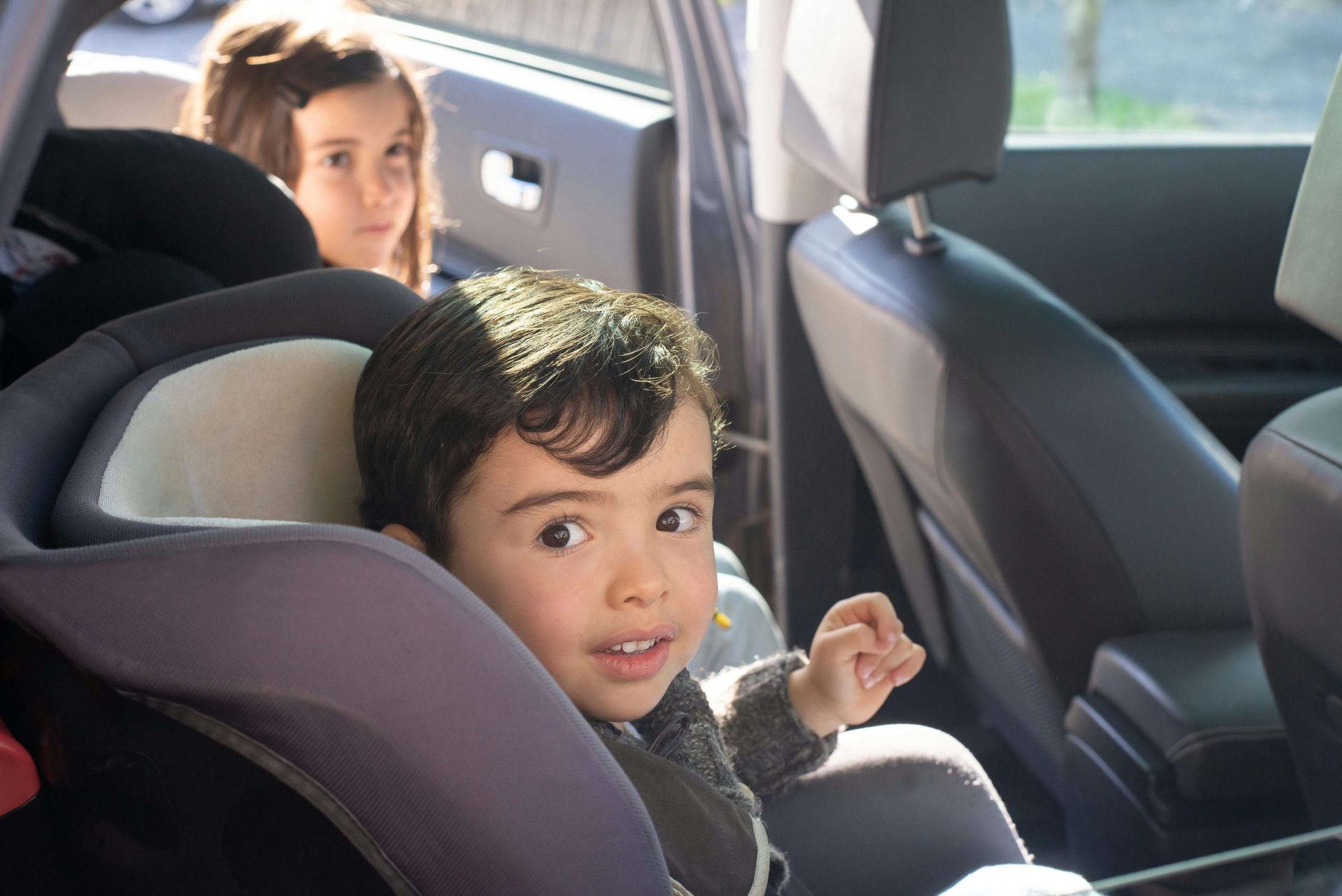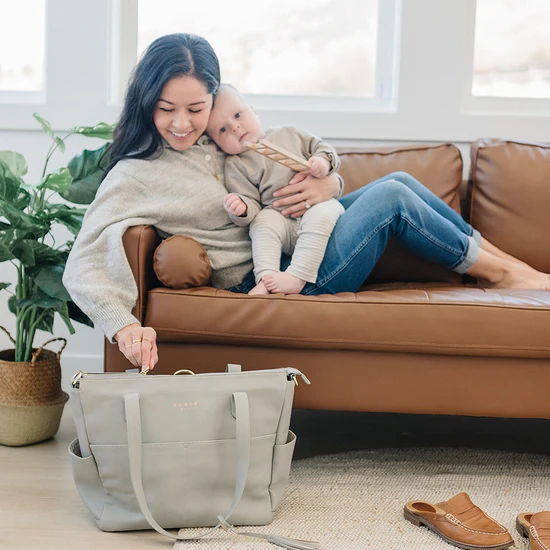A clean and hygienic changing pad is crucial for ensuring your baby’s health and well-being. However, diaper changes, spills, and spit-ups can quickly turn this essential item into a breeding ground for bacteria and germs. But don’t worry! With the right techniques and a little effort, you can keep your baby’s changing pad spotless and safe. How to clean a baby changing pad? In this comprehensive guide, we will walk you through the step-by-step process of cleaning your baby changing pad effectively, addressing various materials and scenarios, and ensuring a hygienic environment for your little one.
The Importance of a Clean Changing Pad: Protecting Your Baby’s Health
A baby’s changing pad is a high-traffic area, exposed to bodily fluids, diaper messes, and other potential contaminants. Regular and thorough cleaning is vital to prevent the spread of germs and protect your baby’s delicate skin from irritation and infections.
Bacteria and Germ
A dirty changing pad can harbor a variety of bacteria and germs, including E. coli, Staphylococcus aureus, and even traces of fecal matter. These microorganisms can pose a risk to your baby’s health, especially if they have any cuts or scrapes on their skin.
Skin Irritation
Residual urine, feces, or cleaning products left on the changing pad can irritate your baby’s sensitive skin, leading to diaper rash or other skin conditions.
Unpleasant Odors
A dirty changing pad can also develop unpleasant odors, creating an uncomfortable environment for both you and your baby.
Cleaning Frequency: Establishing a Routine
Regular cleaning is essential to maintain a hygienic changing pad.
-
After Each Use: It’s ideal to clean the changing pad after each diaper change, even if there are no visible messes. A quick wipe-down with a disinfectant wipe or a damp cloth with mild soap and water can help to remove any lingering germs.
-
Deep Cleaning: In addition to daily cleaning, a more thorough deep cleaning should be performed at least once a week or more frequently if there are significant spills or accidents.
Cleaning Supplies: Gathering Your Arsenal
Before you begin cleaning, make sure you have the necessary supplies on hand:
-
Cleaning Solution: You can use a variety of cleaning solutions, depending on the material of your changing pad and your preferences. Options include:
- Mild soap and water
- Disinfectant wipes or spray
- Vinegar solution (equal parts water and white vinegar)
- Baking soda paste (mix baking soda with a small amount of water to form a paste)
-
Soft Cloths or Sponges: Choose soft cloths or sponges that won’t scratch or damage the surface of your changing pad.
-
Paper Towels: Paper towels are useful for absorbing excess moisture or cleaning up larger messes.
-
Gloves (optional): If you prefer, wear disposable gloves to protect your hands from germs and cleaning solutions.
Cleaning Different Types of Changing Pads: Tailored Approaches
How to clean a baby changing pad? Different changing pad materials require slightly different cleaning methods. Let’s explore how to clean various types of changing pads:
1. Vinyl or Plastic Changing Pads
Vinyl or plastic changing pads are the most common and easiest to clean.
-
Remove the Cover: If your changing pad has a removable cover, take it off and wash it separately according to the care instructions.
-
Wipe Down: Wipe down the entire surface of the changing pad with a disinfectant wipe or a damp cloth with mild soap and water. Pay special attention to any crevices or seams where dirt and grime can accumulate.
-
Disinfect: If desired, spray the changing pad with a disinfectant spray and let it sit for the recommended contact time before wiping it dry.
-
Dry Thoroughly: Ensure the changing pad is completely dry before putting the cover back on or using it again. Moisture can lead to mold or mildew growth.
2. Fabric Changing Pads
Fabric changing pads require a bit more care than vinyl or plastic ones.
-
Check the Care Instructions: Always check the care label on your fabric changing pad for specific cleaning instructions. Some may be machine washable, while others may require handwashing.
-
Spot Clean: For small spills or stains, spot clean the affected area with a damp cloth and mild soap or a gentle stain remover.
-
Handwashing or Machine Washing: If the changing pad is machine washable, wash it on a gentle cycle with cold water and a mild detergent. If handwashing, soak the pad in a basin of cool water with mild soap, gently agitate it, and rinse thoroughly.
-
Air Dry: Lay the changing pad flat to air dry completely. Avoid using high heat or direct sunlight, which can damage the fabric.
3. Waterproof Changing Pads
Waterproof changing pads offer a convenient and hygienic option, but they still require regular cleaning.
-
Wipe Down: Wipe down the entire surface of the waterproof changing pad with a disinfectant wipe or a damp cloth with mild soap and water.
-
Pay Attention to Seams: Ensure you clean the seams and edges of the waterproof changing pad thoroughly, as these areas can trap moisture and bacteria.
-
Dry Completely: Dry the changing pad completely before using it again to prevent mold or mildew growth.
4. Travel Changing Pads
Travel changing pads are essential for on-the-go diaper changes, but they can also get dirty quickly.
-
Wipe Down: After each use, wipe down the travel changing pad with a disinfectant wipe or a damp cloth with mild soap and water.
-
Machine Wash (if applicable): If your travel changing pad is machine washable, follow the care instructions on the label.
-
Air Dry: Hang or lay the travel changing pad flat to air dry completely before storing it.
Additional Tips: Maintaining a Hygienic Changing Station
Beyond cleaning the changing pad itself, here are some additional tips for maintaining a hygienic changing station:
-
Wash Your Hands: Always wash your hands thoroughly before and after each diaper change to prevent the spread of germs.
-
Use Disposable Changing Pad Liners: Disposable changing pad liners provide an extra layer of protection and can be easily discarded after each use.
-
Clean the Changing Table: Regularly clean the surface of your changing table with a disinfectant wipe or a damp cloth with mild soap and water.
-
Store Diaper Supplies Properly: Keep diapers, wipes, and other changing supplies in a clean and organized manner to prevent contamination.
Tackling Tough Stains: Stain Removal Strategies
Even with diligent cleaning, stubborn stains may occasionally appear on your baby’s changing pad. But don’t fret! Here are some effective stain removal strategies to tackle those tough spots and restore your changing pad to its pristine condition.
-
Urine Stains: For fresh urine stains, blot the area with a clean cloth or paper towel to absorb as much moisture as possible. Then, mix a solution of equal parts water and white vinegar and apply it to the stain. Let it sit for a few minutes, then blot it again with a clean cloth. Repeat if necessary.
-
Poop Stains: For poop stains, scrape off any solids carefully with a disposable utensil or a gloved hand. Then, apply a paste of baking soda and water to the stain and let it sit for a few minutes. Gently scrub the paste with a soft cloth or sponge, then wipe the area clean with a damp cloth. If the stain persists, you can try using a mild stain remover or an enzyme cleaner specifically designed for baby stains.
-
Spit-Up Stains: Spit-up stains can be easily removed with a damp cloth and mild soap or a baby-safe stain remover. Blot the stain gently and avoid rubbing, which can spread the stain further.
-
Oil-Based Stains: For oil-based stains, like diaper rash cream or baby oil, try using a bit of cornstarch or baby powder to absorb the oil. Let it sit for a few minutes, then brush it off and wipe the area clean with a damp cloth. If the stain remains, you can try using a mild dish soap or a stain remover specifically designed for oil-based stains.
Conclusion: A Clean and Safe Haven for Your Baby
How to clean a baby changing pad? A clean changing pad is essential for creating a safe and hygienic environment for your baby. By following these cleaning tips and establishing a regular cleaning routine, you can ensure your little one’s changing pad remains a spotless sanctuary, free from germs and bacteria.
Remember, a clean changing pad not only protects your baby’s health but also provides a comfortable and pleasant experience during diaper changes. So, embrace the cleaning process, make it a part of your routine, and enjoy the peace of mind that comes with knowing your baby’s changing pad is clean and safe.








